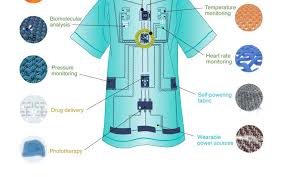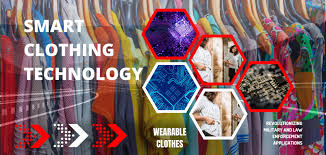
How Smart Clothes Are Revolutionizing Healthcare
Imagine wearing a T-shirt that monitors your heart rate, a pair of socks that detects early signs of diabetic neuropathy, or a sports bra that tracks your breathing and posture in real time. This isn’t some distant sci-fi vision—it’s already happening.
Smart clothing, also known as e-textiles or wearable tech apparel, is reshaping the way we think about health, diagnostics, and even treatment. By embedding sensors, circuits, and Bluetooth connectivity directly into fabric, scientists and companies are turning everyday clothes into powerful medical tools.
And the implications for healthcare are enormous.
What Are Smart Clothes?
Smart clothes integrate technology into textiles to collect data from the body and environment. Unlike traditional wearables like smartwatches or fitness trackers, these garments are part of what you’re already wearing, making health monitoring continuous, discreet, and comfortable.
They typically include:
-
Sensors to detect temperature, motion, heart rate, muscle activity, and more
-
Conductive threads or printed circuits woven directly into the fabric
-
Wireless modules that send data to phones or cloud systems for analysis
The goal? To make health tracking seamless, passive, and personalized.
Real-Life Applications: From Hospitals to Homes
Smart clothes are moving from the lab to the market at record speed, offering solutions for a wide range of conditions and lifestyles:
🫀 Cardiac Monitoring
Smart shirts by companies like Hexoskin and OMsignal monitor heart rate variability, breathing, and even ECG patterns—ideal for post-op recovery, athletes, and people with chronic heart conditions.
🧠 Neurological Conditions
Smart socks by Sensoria help track gait patterns and foot pressure in stroke patients or those with Parkinson’s, offering early warning signs for falls or imbalances.
👶 Infant Health
Startups like Owlet have created onesies that monitor an infant’s heart rate and oxygen levels, alerting parents via smartphone in case of irregularities—especially useful for high-risk babies.
🧘 Posture and Musculoskeletal Health
Smart yoga pants or posture shirts can give haptic feedback (gentle vibrations) to correct form and alignment, reducing injury risk for athletes and desk workers alike.
💉 Diabetes Management
Experimental smart patches and socks can monitor glucose levels non-invasively or detect the kind of foot injuries that often go unnoticed until it’s too late.
Benefits: A Game-Changer for Preventive Medicine
Smart clothing promises to shift healthcare from reactive to proactive:
-
24/7 monitoring means earlier detection of health problems before symptoms appear
-
Improved compliance—since users don’t need to remember to wear or charge a separate device
-
Remote patient tracking, reducing hospital visits for chronic conditions
-
Better data for doctors, powered by continuous, real-time feedback
It’s healthcare that moves with you—literally.
The Tech Under the Fabric
Creating smart clothes is no small feat. Developers must blend functionality, comfort, and durability. After all, this tech has to survive sweat, stretching, washing machines, and everyday wear.
Core technologies include:
-
Flexible electronics that bend and move with the fabric
-
Conductive threads made of silver, carbon, or graphene
-
Miniature batteries or energy-harvesting systems (like kinetic or solar)
-
Edge computing chips that process data locally before transmitting it
Researchers are also exploring biodegradable circuits and self-healing materials, making these garments not only smart—but sustainable.
Privacy and Security: Who Owns Your Body Data?
As with any health tech, privacy is a major concern. Smart clothes collect intimate, continuous data—which could be misused if not properly secured.
Key questions include:
-
Who has access to the data—just the user, or healthcare providers and insurers too?
-
Are there safeguards against hacking or data leaks?
-
Can users opt out of certain types of monitoring?
Experts are calling for stronger data governance laws to protect users as smart textiles become more widespread.
What’s Next: The Future of “Wearable” Medicine
The next frontier? Therapeutic textiles that don’t just monitor—but treat.
-
Fabrics that release medicine in response to detected symptoms
-
Smart bandages that monitor wound healing and deliver antibiotics
-
Exosuit-like garments that assist with movement and rehab
And as AI is layered onto this data stream, your clothes could one day predict illnesses before they begin, acting as your first line of defense against disease.
Final Thought: Your Wardrobe Is Becoming Your Wellness Partner
Smart clothes aren’t just gadgets. They represent a revolution in how we engage with our bodies, our health, and our medical systems. In a world where early detection and remote care are more important than ever, the shirt on your back could soon be the most powerful health tool you own.
And the best part? You’ll barely notice it’s there.
